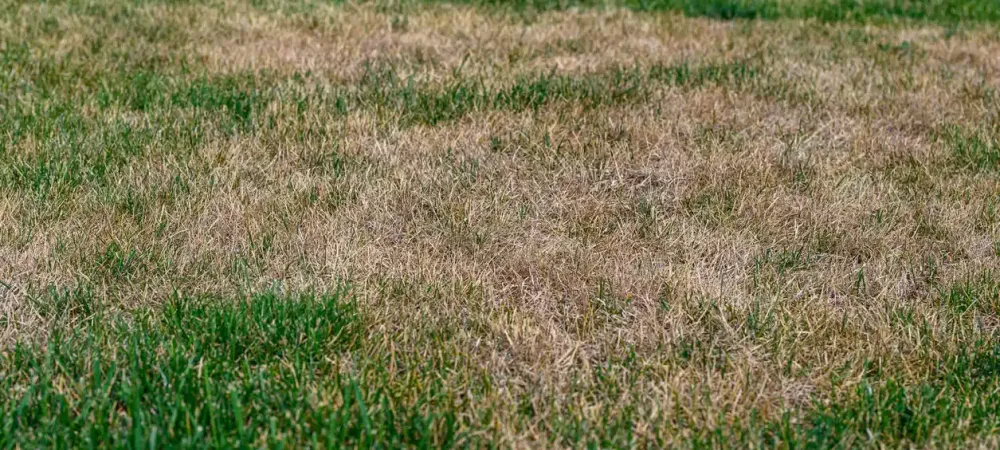Take-All Root Rot in Texas Lawns

Take-All Root Rot (TARR) is one of the most stubborn lawn diseases Texas homeowners face—especially those growing St. Augustine or bermudagrass. Caused by the soilborne fungus Gaeumannomyces graminis var. graminis, TARR quietly attacks your lawn’s root system, often leaving you with weak, thinning, and patchy turf—despite your best efforts.
If your lawn refuses to green up in spring, even with regular watering and fertilizer, TARR may be the hidden culprit.
How to Identify Take-All Root Rot
TARR can look like other common lawn issues—so accurate diagnosis is key. According to the. Texas A&M AgriLife fact sheet, here are the most common signs to watch for:
- Yellowing or browning patches, often starting in spring
- Stolons (runners) lift easily from the soil—roots underneath appear black and rotted
- Turf thins out even with proper watering and fertilization
- Symptoms are worse in shady or poorly drained areas
Many homeowners initially mistake TARR for drought stress, large patch, or chinch bug damage. But if the roots are brittle, dark, and lifeless—you’re likely dealing with Take-All Root Rot.
Step-by-Step Lawn Recovery Plan
TARR isn’t a one-and-done fix—it requires a full recovery strategy. Here's a proven step-by-step process used by lawn care pros across Texas:
- Assess the Damage: Determine what sections are still alive and which areas are too far gone. Focus your efforts where recovery is possible.
- Improve Drainage: Standing water and poor drainage make conditions worse. Regrade low areas, clear gutters, and consider French drains if needed.
- Increase Sunlight: Trim back trees and shrubs to reduce shade. TARR thrives in dark, damp conditions.
- Dethatch: Remove excessive thatch buildup to improve air and water penetration at the soil level.
- Core Aerate: Aerating the lawn relieves soil compaction and helps oxygen reach the roots.
- Topdress with Peat Moss: Apply a ¼-inch layer of peat moss across the affected lawn. This helps lower the pH and creates a less hospitable environment for the fungus.
- Apply Fungicide: Use a professional-grade fungicide labeled for Take-All Root Rot. Apply according to label directions and repeat as needed.
- Avoid Drought Stress: Keep the lawn consistently hydrated—but don’t overwater. Deep, infrequent watering is best.
Long-Term Strategy: Lowering Soil pH
TARR loves alkaline soils, which are common throughout Texas. Lowering your soil’s pH over time can make it harder for the fungus to thrive.
- Apply elemental sulfur based on soil test results
- Be patient—this is a multi-year process
- Re-test soil pH annually to track progress
See TARR Recovery in Action
For a closer look at real-world TARR treatment, check out these videos from Texas lawns just like yours:
- Take-All Root Rot Recovery – Mansfield, TX
- Step-by-Step Take-All Root Rot Plan
- How Aeration Helps With Take-All Root Rot
Take-All Root Rot is frustrating—but it’s beatable. The key is to improve the growing environment, support root health, reduce stress, and stick with the plan. Most lawns won’t bounce back overnight, but with a consistent, science-backed approach, they do recover.
If you're unsure whether you're dealing with TARR or another issue, consult a local lawn care professional or check out Texas A&M's full fact sheet here.
